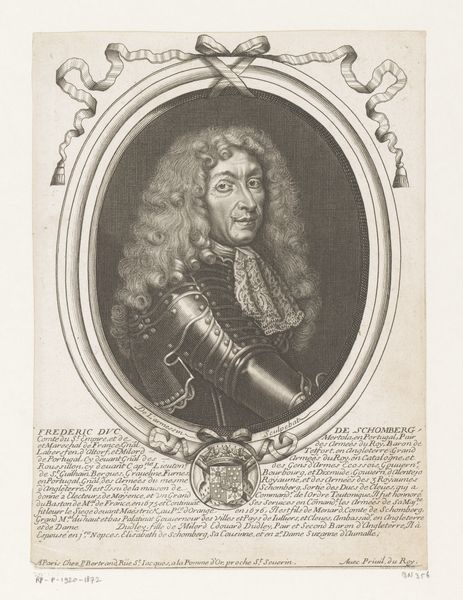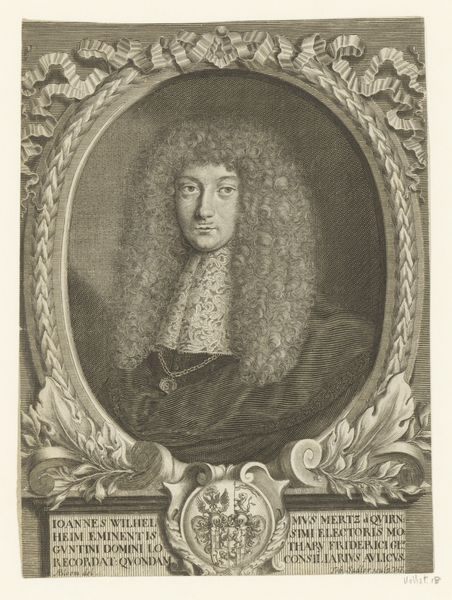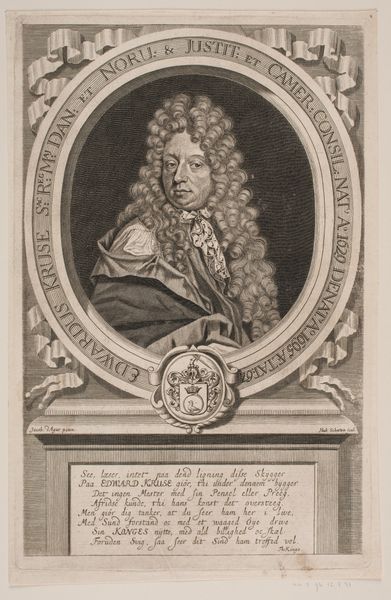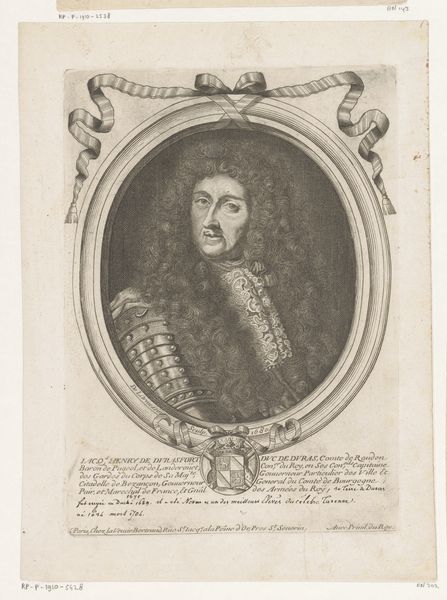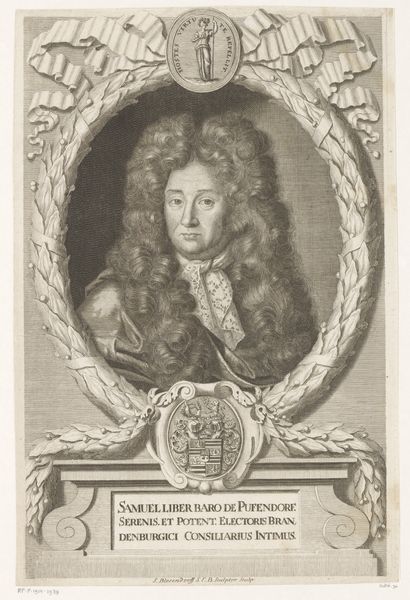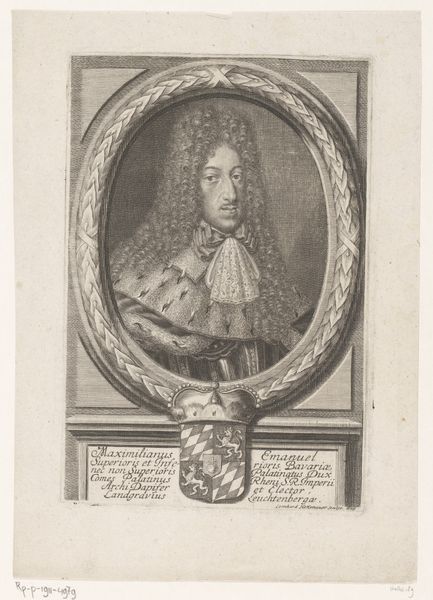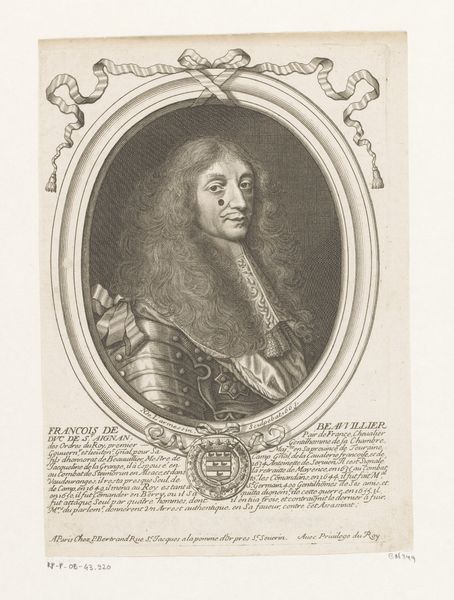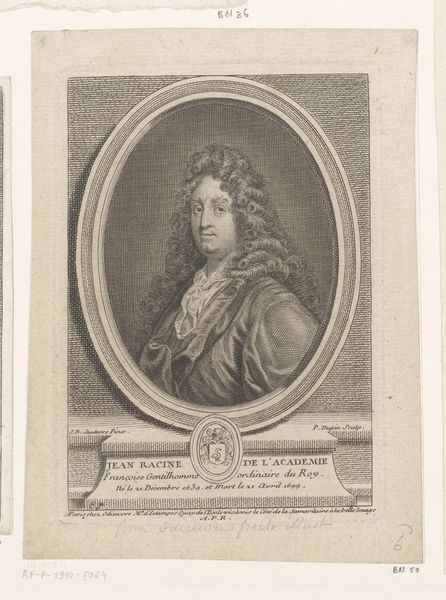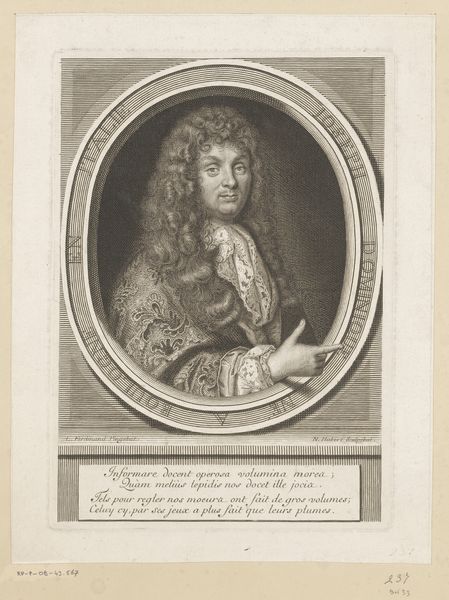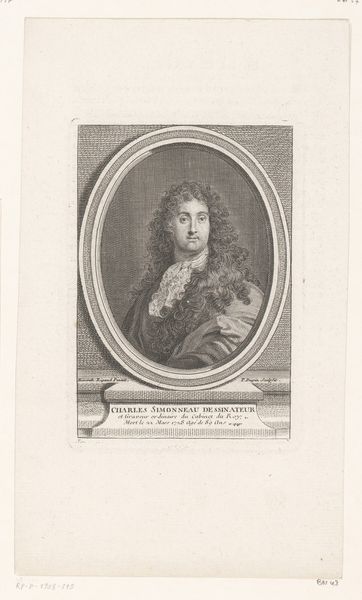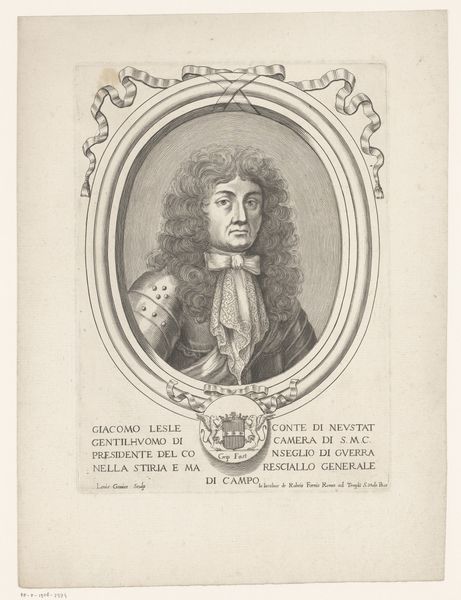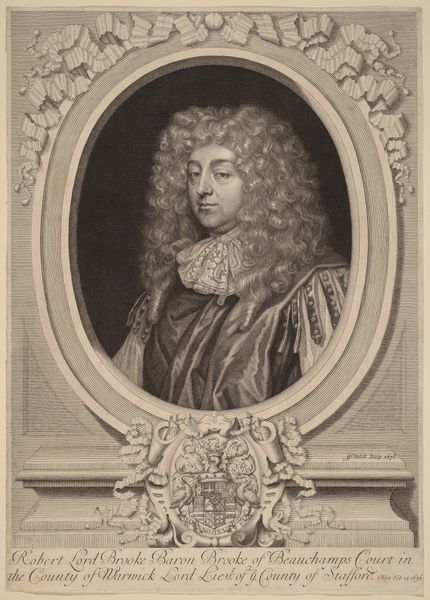
print, engraving
#
portrait
#
baroque
# print
#
old engraving style
#
history-painting
#
engraving
Dimensions: height 241 mm, width 171 mm
Copyright: Rijks Museum: Open Domain
Curator: This engraving is a portrait of Claude Le Peletier, dating from sometime between 1678 and 1694, created by Nicolas de Larmessin I. It’s held here at the Rijksmuseum. What are your first thoughts? Editor: Baroque seriousness! And an almost dizzying level of detail. I’m immediately drawn to the swirling energy of his wig against the severe oval frame. There’s a tension between containing and unleashing that really grabs me. Curator: Absolutely. Larmessin, working in print, would have needed exceptional skill and meticulous planning to achieve this level of detail and texture through engraving. It demonstrates not only his artistic ability but the sophistication of printmaking as a means of disseminating images of power and status at the time. Editor: You can almost feel the pressure of the metal plate against the paper. It’s a very material reminder of the labor involved in creating these images, a far cry from our effortless digital consumption today, wouldn't you agree? Plus, that wig! It's a statement about social status. You can almost see the price tag. Curator: Indeed. The very choice of materials – copper plate, ink, paper – all would have contributed to the construction and perception of Le Peletier's authority as a "Chevalier, Ministre d'Estat" . This portrait isn't simply a likeness; it’s a carefully constructed object meant to project power, a controlled image circulated within very particular social and political circles. Editor: Right! The frame with its decorative ribbons, even the elaborate inscription detailing Le Peletier's titles… everything shouts "importance!" It’s like visual social networking for the 17th century elite. Though I wonder, was he actually happy with it? All that posing! Curator: We can only speculate about his personal satisfaction, but the very existence of this portrait speaks to the increasing bureaucratization of power in the period. Images of officials like Le Peletier served as visual reminders of the state’s expanding presence in everyday life. It’s worth thinking about how the medium reinforced those societal shifts. Editor: Mmm, interesting perspective! For me, looking at this portrait is a bit like hearing an echo across centuries, of power, wealth and a wig with way more personality than I'll ever have. Thanks! Curator: Indeed, thanks to considering the materiality of this work, it enriches our perception and informs our understanding of historical status through printed artwork.
Comments
No comments
Be the first to comment and join the conversation on the ultimate creative platform.
